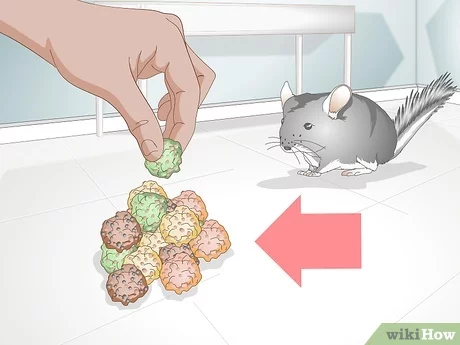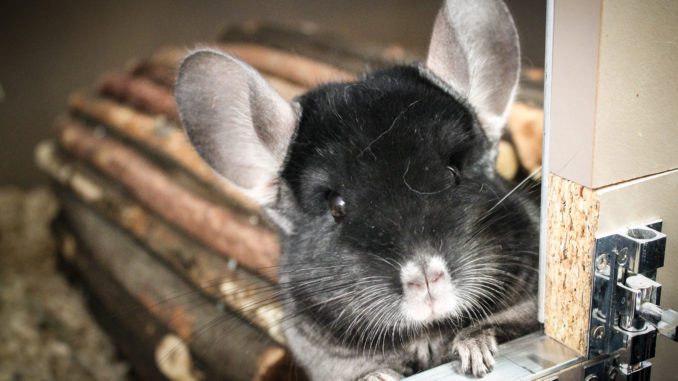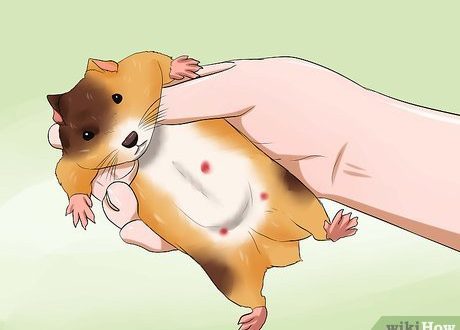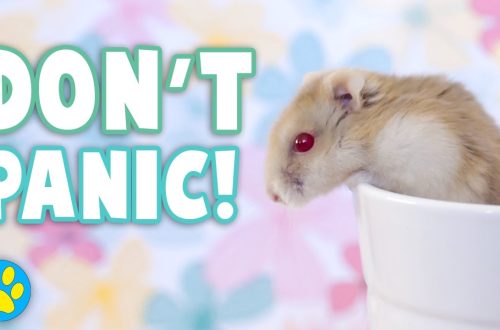
How to train a chinchilla at home

Thanks to their luxurious coat and cute muzzle, chinchillas are perceived as decorative animals. With a closer acquaintance with the pet, the owners are surprised at the curiosity and ingenuity of these rodents. The question inevitably arises, how to train a chinchilla at home, is it possible to teach her any commands.
Contents
Learning Ability
According to professional breeders, chinchillas can be called the owners of the most developed intelligence among decorative rodents. Their comprehension is inferior to the abilities of a dog, but it is quite comparable to the level of a cat. A hand pet distinguishes its name well, executes simple commands, remembers the sequence of actions. Chinchillas also have the rudiments of thinking, so they quickly understand the relationship of positive or negative events with certain actions. It is even recommended to train these decorative rodents, because otherwise everything that a chinchilla can do will be limited to gnawing and damaging objects in the apartment, an unpleasant habit of biting the owner’s fingers.
IMPORTANT: The main obstacle to training is the fearfulness of animals.
Chinchillas are very wary and will avoid interacting with a person they don’t trust. Therefore, you can train only a tame animal that feels completely safe.
Chinchilla training at home
Chinchillas are well trained to perform understandable simple commands that are expressed in a short word. It is better to start working with a pet from the age of three weeks – it is during this period that small rodents form an idea of uXNUMXbuXNUMXbthe world around them. The whole process of training is carried out with the help of a reward with a treat, so it is important that the animal is not full during the lesson. The best time for training is in the evening before the main feeding.
A good result can only be obtained with a patient approach. During training, you can not use force, hold the animal against your will, raise your voice. By such actions, you can undermine the trust of the animal for a long time, greatly complicate its further training, or even make it impossible.
Teaching method
Use treat rewards and a calm, patient approach to teach your chinchilla commands. It is very important that the animal distinguishes its name – this will help to quickly attract its attention. It is better to choose a nickname for the animal with the inclusion of whistling and hissing – “s”, “u”, “sh”, then it will be easier for him to remember it.
Treat your pet every time he responds to his name or runs up to your hand on the “come to me” command. It is also better to repeat “well done” or “good” so that he associates this word with encouragement. When the rodent remembers his nickname, you can begin to accustom him to walks.

Commands: “walk”, “home”, “swim”
The word “walk” will let the pet understand that it is possible to leave the cage, and “home” – that it is time to come back. Each time before you take the animal out of the cage, say several times clearly “walk”. Before you take it back, just say “home” or “to the cage” out loud first – and give the pet a tasty bite when he is inside. As soon as you notice that the chinchilla itself jumps out of the cage or back, having heard the usual word, be sure to reward it with a treat and praise it. In the future, you can quickly return your pet from a walk without a long search around the apartment. By the same principle, the team “swim” is taught – say the word loudly and clearly every time before putting the bathing suit on.
Commands: “no” and “come to me”
The “no” command is used to break the habit of biting. It is also very important if you let the animal walk around the room, where there are objects that cannot be touched. Teaching this word instead of encouragement includes a slight negative impact – move the animal to the side or click on its nose. If he chews on the wallpaper or ruins other things, you can clap your hands loudly after the command. The pet will quickly associate the word with an unpleasant sensation for him, so he will stop his actions when he hears it. After that, you can link this command with the words “to me” – a trained chinchilla, leaving a forbidden occupation, will run up to the owner.

What other commands can you teach a chinchilla
A smart pet can always be taught additional commands and tricks. To do this, use the already familiar method – the command word + encouragement and “well done”. In order for the animal to climb onto your shoulder, gradually teach it to rise on your arm and higher, luring with a treat. When he flies up on your shoulder on command, you can teach him to “kiss” by encouraging him every time he touches your cheek with his nose. You can also teach a chinchilla to stand on its hind legs, and do so for several steps, carry objects in its teeth, run up to other family members when calling a name.
Video: chinchilla training at home
Chinchilla training at home
3.2 (63.75%) 16 votes





